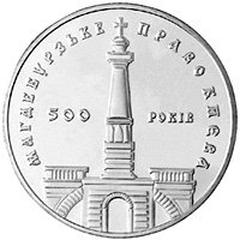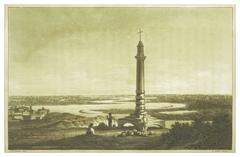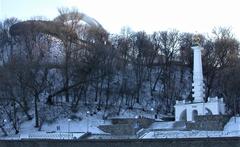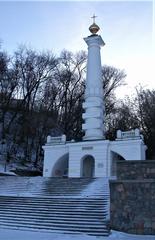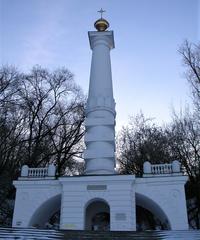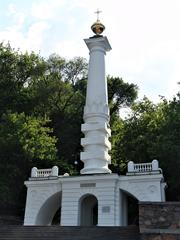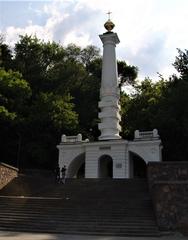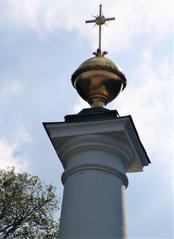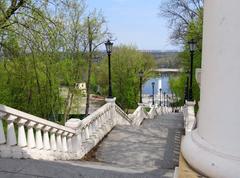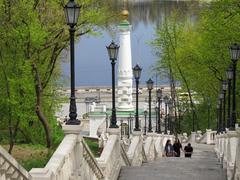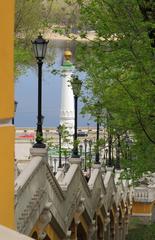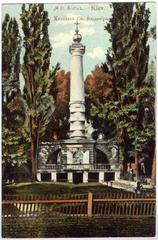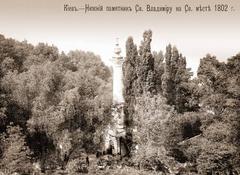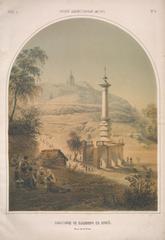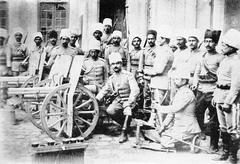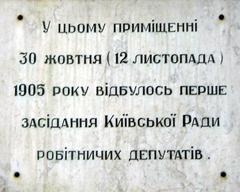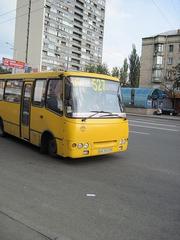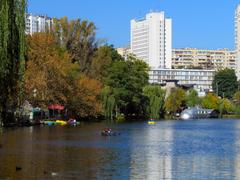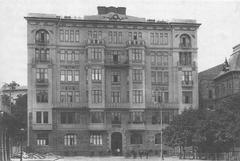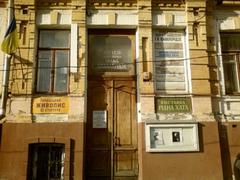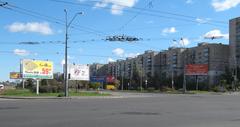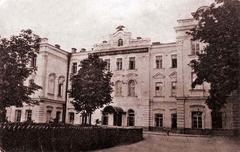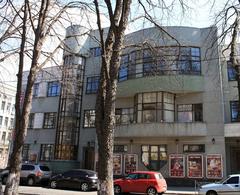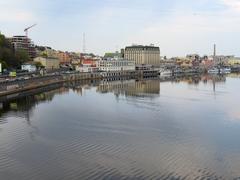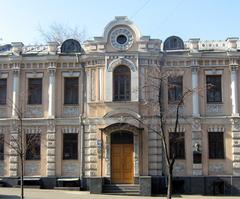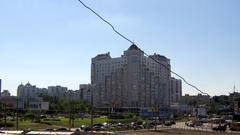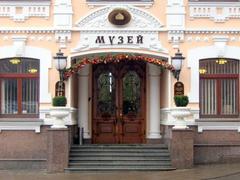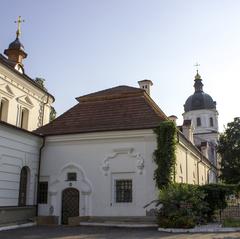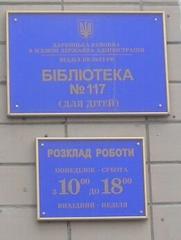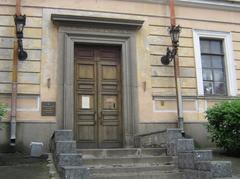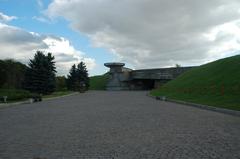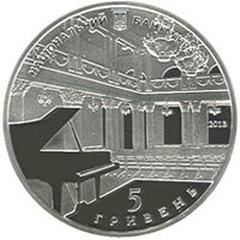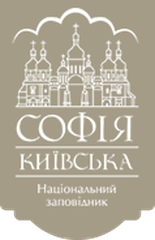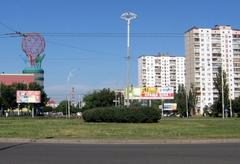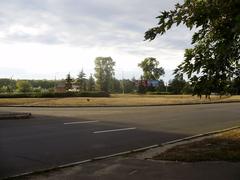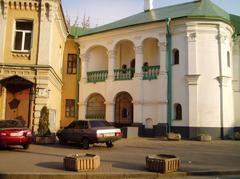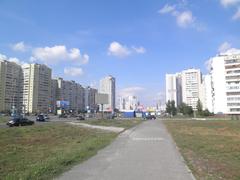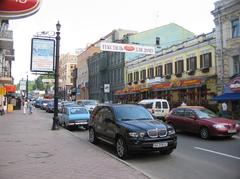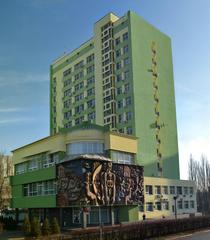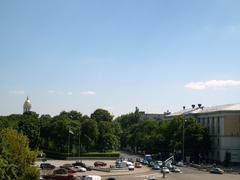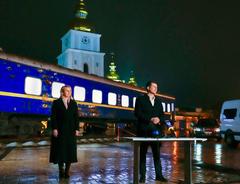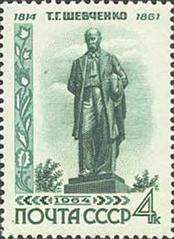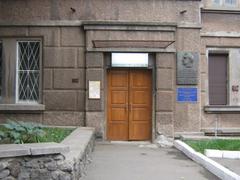
Visiting the Monument to the Magdeburg Rights in Kyiv, Ukraine: Tickets, Hours, and Visitor Tips
Date: 15/06/2025
Introduction
The Monument to the Magdeburg Rights in Kyiv stands as a symbol of the city’s enduring tradition of self-governance and civic pride. Located in the historic Podil district, it commemorates the granting of Magdeburg Rights—a medieval charter of municipal autonomy that shaped Kyiv’s development and urban culture. This comprehensive guide covers the monument’s history, architectural features, visiting information, travel tips, and its continuing relevance in the city’s identity.
Table of Contents
- Historical Context: Magdeburg Rights in Eastern Europe
- The Granting of Magdeburg Rights to Kyiv
- Symbolism and Architectural Features
- Visiting the Monument: Hours, Tickets, and Accessibility
- Getting There
- Nearby Attractions and Suggested Itineraries
- Visitor Experience, Facilities, and Safety
- Practical Tips and Seasonal Considerations
- Frequently Asked Questions (FAQ)
- Legacy and Contemporary Significance
- References
Historical Context: Magdeburg Rights in Eastern Europe
The Magdeburg Rights originated in the 13th-century German city of Magdeburg as a set of municipal laws granting towns judicial autonomy, self-governance, and economic privileges (Wikipedia). By the late 15th century, these rights had spread across Central and Eastern Europe, fostering urban growth and a vibrant civic culture (Wikidata).
Kyiv’s adoption of Magdeburg Rights marked a pivotal transition from feudal rule to municipal self-administration, empowering citizens to elect local magistrates, manage economic activities, and establish independent courts. This autonomy laid the foundation for Kyiv’s emergence as a major commercial, cultural, and legal center (Princeton University Press).
The Granting of Magdeburg Rights to Kyiv
Between 1494 and 1497, King Alexander Jagiellon of Poland granted Kyiv the Magdeburg Rights, formalizing the city’s status as a self-governing municipality. This framework introduced a city council (magistrat) and elected officials, including the vogt (mayor), enabling local control over legal and economic affairs (Princeton University Press). These rights distinguished Kyiv from rural regions still bound by feudal obligations and were reaffirmed by subsequent rulers until their abolition in 1835.
Symbolism and Architectural Features
Monument Design and Setting
Erected between 1802–1808 and designed by architect Andrey Melensky, the Monument to the Magdeburg Rights is one of Kyiv’s oldest surviving civic landmarks (Wikipedia). Its neoclassical rotunda, supported by Ionic columns and crowned with a gilded sphere and cross, embodies Enlightenment ideals of justice, rule of law, and civic virtue.
The monument’s location, overlooking the Dnipro River in the Podil district, is rich in symbolic value. It stands near the legendary site where Prince Volodymyr the Great is believed to have baptized his sons, blending the city’s legal and religious heritage (Go2Kiev).
Sculptural and Structural Elements
- Column & Rotunda: The central white column rises 6.5 meters above a robust pedestal, reflecting classical proportions.
- Allegorical Sculpture: Atop the column, an allegorical figure bearing the Magdeburg coat of arms symbolizes civic autonomy (Trek Zone).
- Bas-reliefs: The pedestal features reliefs illustrating scenes from Kyiv’s medieval governance and the Baptism of Rus.
- Chapel & Spring: Below the rotunda, a chapel built over a natural spring highlights the site’s spiritual significance (Go2Kiev).
Restoration and Preservation
The monument has been restored multiple times, including significant overhauls in 1862, 1988, and 2013. During the most recent renovation, imperial symbols were replaced with the Ukrainian trident, reflecting the nation’s evolving identity (Go2Kiev). Ongoing preservation ensures the monument’s historical and cultural integrity.
Visiting the Monument: Hours, Tickets, and Accessibility
- Opening Hours: The monument and surrounding park are open year-round, accessible 24 hours a day. For safety and the best experience, visit during daylight.
- Admission: Entry is free; there are no tickets or entrance fees (Kyivmaps).
- Accessibility: Paths in the park are generally accessible, though the grand staircase may be challenging for those with limited mobility. Alternative accessible routes are available nearby.
- Guided Tours: Local tour operators frequently include the monument in historical walking tours of Podil and Kyiv’s riverfront, offering in-depth context.
Getting There
- By Metro: From Maidan Nezalezhnosti station, take the metro to Arsenalna and walk down Instytutska Street to Naberezhne Highway. The monument is about a 15–20 minute walk (Evendo).
- By Bus/Trolleybus: Routes 24 and 38 run along Naberezhne Highway. Check schedules for the nearest stop.
- By Funicular: The Kyiv Funicular connects the upper city to Podil, with a lower station close to the monument (Against the Compass).
- On Foot: The site is easily reachable from central Kyiv, especially via a scenic walk from Volodymyrska Hill.
Nearby Attractions and Suggested Itineraries
The monument’s location makes it a perfect starting point for exploring other historical and cultural sites:
- Saint Vladimir Hill: Panoramic views and landscaped walking paths.
- St. Michael’s Golden-Domed Monastery: Renowned religious site nearby.
- Monument to Vladimir the Great: Celebrates Kyiv’s Christianization.
- National Philharmonic of Ukraine: Venue for classical concerts.
- Arch of Friendship of Nations: Symbolic Soviet-era landmark.
- Kyiv River Port and Observation Deck: River views and leisure activities.
Combine these sites for a half-day walking tour of Kyiv’s historic center and riverfront (Kyivmaps).
Visitor Experience, Facilities, and Safety
- Scenic Views: The monument’s elevated position provides stunning river and city vistas, especially at sunrise and sunset.
- Cultural Activities: Traditional baptisms and water blessings are occasionally held at the spring beneath the monument (Wikipedia).
- Facilities: Benches and shaded areas are available; public restrooms can be found in nearby parks or the Philharmonic building.
- Accessibility: While the main stairway is steep, alternative accessible paths are present.
- Safety: Due to ongoing martial law, observe curfew times, heed air raid alerts, and follow local authority guidance (Visit Ukraine Today). Locals are helpful and safety protocols are well communicated (Through a Travel Lens).
Practical Tips and Seasonal Considerations
- Best Time to Visit: Spring and autumn for mild weather and vibrant surroundings.
- Dress: Wear comfortable shoes for stairs and park paths.
- Essentials: Bring water and snacks; nearby vendors may be limited.
- Photography: The monument and river views are most photogenic in early morning or late afternoon.
- Language: Most signage is in Ukrainian; some English is available. A few basic local phrases enhance your experience.
- Respect: Observe ceremonies quietly and use litter bins to maintain the park.
Frequently Asked Questions (FAQ)
Q: Is the monument open year-round?
A: Yes, it is accessible 24/7 and free of charge.
Q: Are guided tours offered?
A: While there are no official on-site tours, local operators include the monument in their itineraries.
Q: Is the monument wheelchair accessible?
A: Surrounding park paths are generally accessible, but the main staircase may be challenging.
Q: Are there restrooms?
A: Facilities are available in adjacent parks and at the National Philharmonic.
Q: Can I take photos?
A: Yes, photography is encouraged. For drone use, obtain permission from city authorities.
Q: What is the best season to visit?
A: Spring and autumn for pleasant weather and beautiful foliage.
Legacy and Contemporary Significance
The Monument to the Magdeburg Rights encapsulates Kyiv’s transformation from feudal dependency to a self-governing urban center. Its neoclassical architecture and symbolic sculptures celebrate the city’s legal innovation and civic pride (In Your Pocket). Frequent restoration efforts and integration into civic life ensure the monument’s continued relevance. Today, it stands not only as a historical artifact but also as an emblem of Kyiv’s resilience and cultural vitality, inspiring both locals and visitors.
References
- Monument to the Magdeburg Rights Kyiv – Trek Zone
- Monument to the Baptism of Rus & Column of Magdeburg Law – Go2Kiev
- Magdeburg Rights – Wikipedia
- Monument to Magdeburg Rights (Kyiv) – Wikipedia
- Magdeburg Rights in Kyiv – Princeton University Press
- Visit Kyiv: History – In Your Pocket
- Through a Travel Lens – Visiting Kyiv & Safety Tips
- Visit Ukraine Today – Travel to Ukraine 2025
- Kyivmaps – Monument to the Magdeburg Rights Kyiv
- Evendo – Monument to the Magdeburg Rights Kyiv
- Against the Compass – Visit Kyiv Guide
- Kiev Tour Guide – Kyiv Travel Guide
- Wanderlog – Kyiv Travel Tips
- Kyiv City Tourism Official Website
Plan your visit, respect local customs, and immerse yourself in the story of Kyiv’s journey toward autonomy and civic greatness. For more travel tips, event updates, and downloadable guides, download the Audiala app and follow us on social media.
